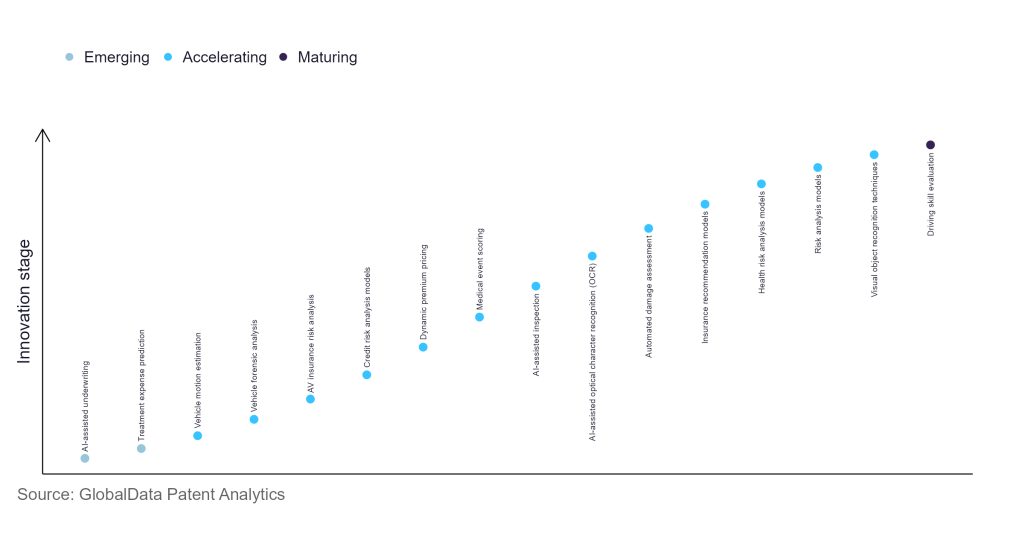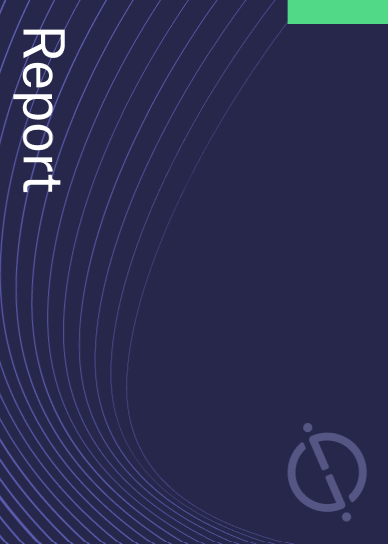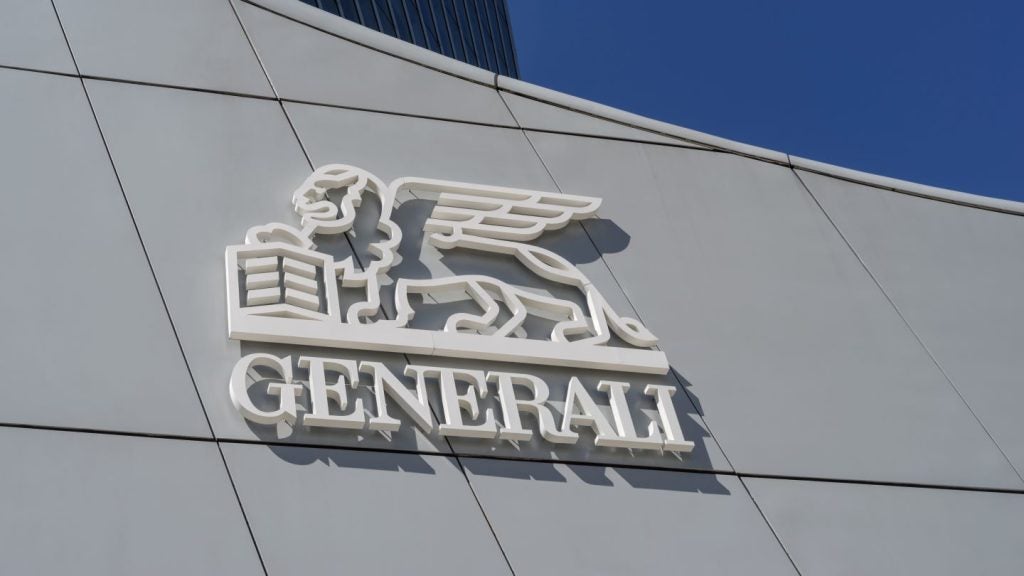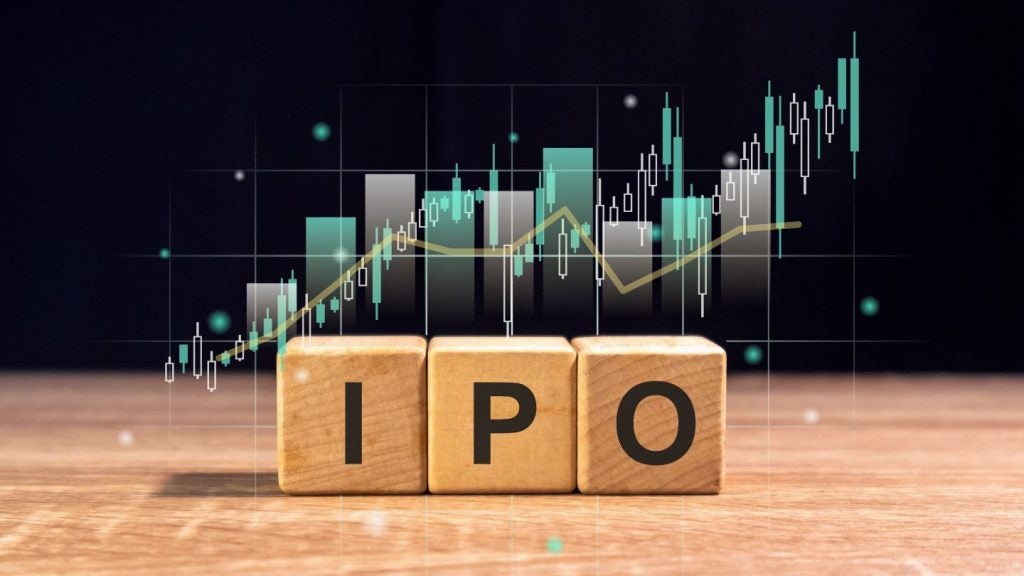The insurance industry continues to be a hotbed of innovation, with activity driven by growing demand for digitalisation and personalisation. With growing importance of technologies such as telematics, machine learning, big data, deep learning, and data science, insurers are overcoming demographic challenges, low penetration rates, cybercrimes and fraudulent claims. In the last three years alone, there have been over 11,000 patents filed and granted in the insurance industry, according to GlobalData’s report on Artificial intelligence in Insurance: AI-assisted underwriting. Buy the report here.
However, not all innovations are equal and nor do they follow a constant upward trend. Instead, their evolution takes the form of an S-shaped curve that reflects their typical lifecycle from early emergence to accelerating adoption, before finally stabilising and reaching maturity.
Identifying where a particular innovation is on this journey, especially those that are in the emerging and accelerating stages, is essential for understanding their current level of adoption and the likely future trajectory and impact they will have.
90 innovations will shape the insurance industry
According to GlobalData’s Technology Foresights, which plots the S-curve for the insurance industry using innovation intensity models built on over 65,000 patents, there are 90 innovation areas that will shape the future of the industry.
Within the emerging innovation stage, AI-assisted underwriting and treatment expense prediction are disruptive technologies that are in the early stages of application and should be tracked closely. Vehicle motion estimation, vehicle forensic analysis, and AV insurance risk analysis are some of the accelerating innovation areas, where adoption has been steadily increasing. Among maturing innovation areas is driving skill evaluation, which is now well established in the industry.
Innovation S-curve for artificial intelligence in the insurance industry

AI-assisted underwriting is a key innovation area in artificial intelligence
The AI-driven underwriting systems used by insurers create a comprehensive risk profile of customers, based on their social media activities, purchasing patterns, news history and reliable official and third-party sources. The AI-driven procedures gather, read, and deliver insights and forecasts from huge data pools, enabling personalised propositions.
GlobalData’s analysis also uncovers the companies at the forefront of each innovation area and assesses the potential reach and impact of their patenting activity across different applications and geographies. According to GlobalData, there are 10+ companies, spanning technology vendors, established insurance companies, and up-and-coming start-ups engaged in the development and application of AI-assisted underwriting.
Key players in AI-assisted underwriting – a disruptive innovation in the insurance industry
‘Application diversity’ measures the number of different applications identified for each relevant patent and broadly splits companies into either ‘niche’ or ‘diversified’ innovators.
‘Geographic reach’ refers to the number of different countries each relevant patent is registered in and reflects the breadth of geographic application intended, ranging from ‘global’ to ‘local’.
Patent volumes related to AI-assisted underwriting
| Company | Total patents (2010 - 2022) | Premium intelligence on the world's largest companies |
| J Fitness | 60 | Unlock Company Profile |
| Expanse Bioinformatics | 52 | Unlock Company Profile |
| SoftBank Group | 27 | Unlock Company Profile |
| International Business Machines | 17 | Unlock Company Profile |
| Lear | 16 | Unlock Company Profile |
| Mitchell International | 10 | Unlock Company Profile |
| Johnson Controls International | 9 | Unlock Company Profile |
| Swiss Re Asia Pacific | 8 | Unlock Company Profile |
| State Farm Mutual Automobile Insurance | 6 | Unlock Company Profile |
| Hartford Financial Services Group | 6 | Unlock Company Profile |
| Cerebri AI | 6 | Unlock Company Profile |
| Xtract360 | 6 | Unlock Company Profile |
| Aioi Nissay Dowa Insurance Services USA | 5 | Unlock Company Profile |
| Accenture | 5 | Unlock Company Profile |
| Aliphcom | 5 | Unlock Company Profile |
Source: GlobalData Patent Analytics
IBM is one of the leading patent filers in automated vehicular accident detection. Their technology keeps track of GPS coordinates, fetches local traffic laws, and collects data from sensors about potential causes of vehicle accidents. Executing programming logic results in the determination of parameters related to at least one vehicle involved in the accident and a potential cause, which is then forwarded to subsequent systems. Some other key patent filers in the AI for the insurance industry include J Fitness, Expanse Bioinformatics and SoftBank Group.
In terms of application diversity, J Fitness leads the pack, with Aliphcom and State Farm Mutual Automobile Insurance in the second and third positions, respectively. By means of geographic reach, Swiss Re Asia Pacific holds the top position, followed by Xtract360 and Aioi Nissay Dowa Insurance Services.
The role of AI in connected cars is twofold. Firstly, the data generated by connected cars will need to be analysed to extract meaningful insights about every car, driver, and road in the network. Secondly, AI will play a role in providing drivers with real-time notifications and warnings about potential collisions or diversions when they are behind the wheel. The leaders in developing this technology for the cars of the future are the key players in the autonomous vehicle industry. However, when it comes to insurance, it will be the insurers, who develop data collection capabilities and integrate technologies such as AI and machine learning, that will be able to target customers more efficiently.
To further understand the key themes and technologies disrupting the insurance industry, access GlobalData’s latest thematic research report on Insurance.
Data Insights
From

The gold standard of business intelligence.
Blending expert knowledge with cutting-edge technology, GlobalData’s unrivalled proprietary data will enable you to decode what’s happening in your market. You can make better informed decisions and gain a future-proof advantage over your competitors.







